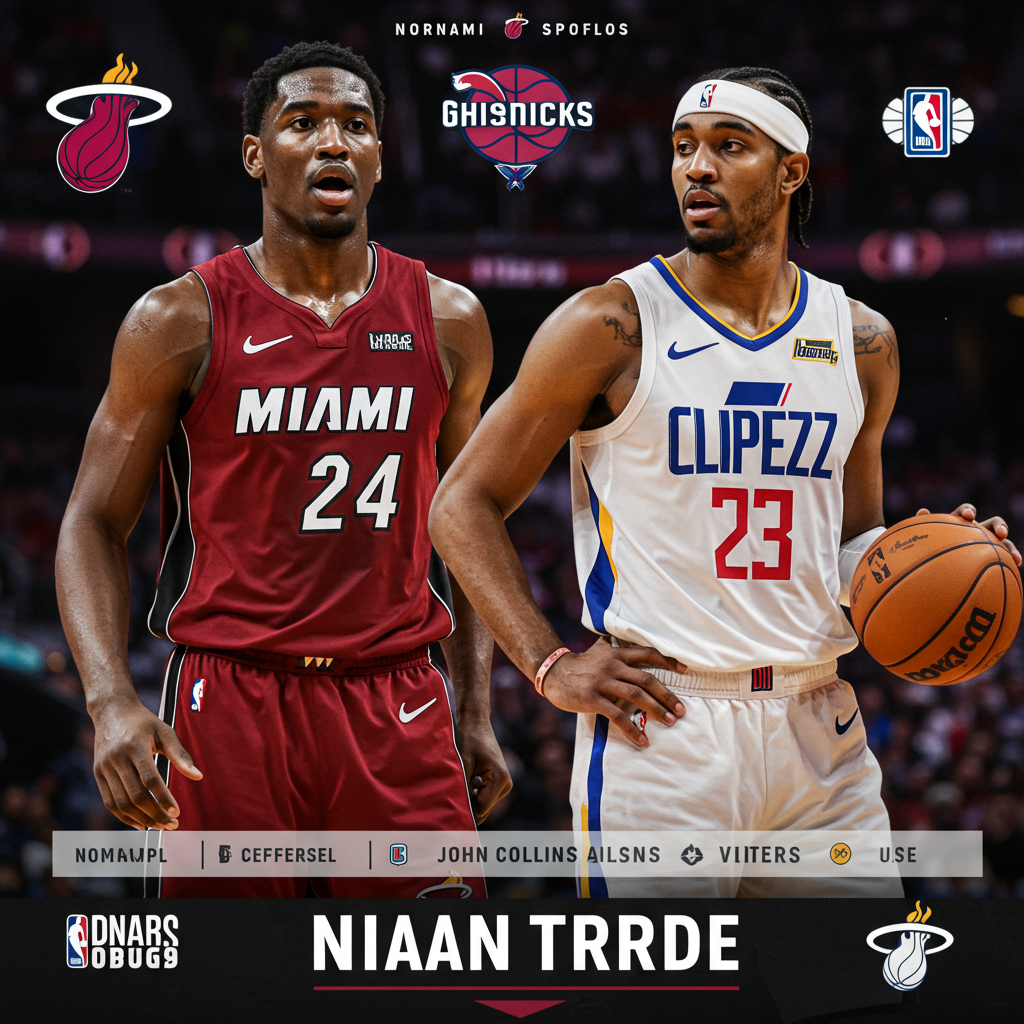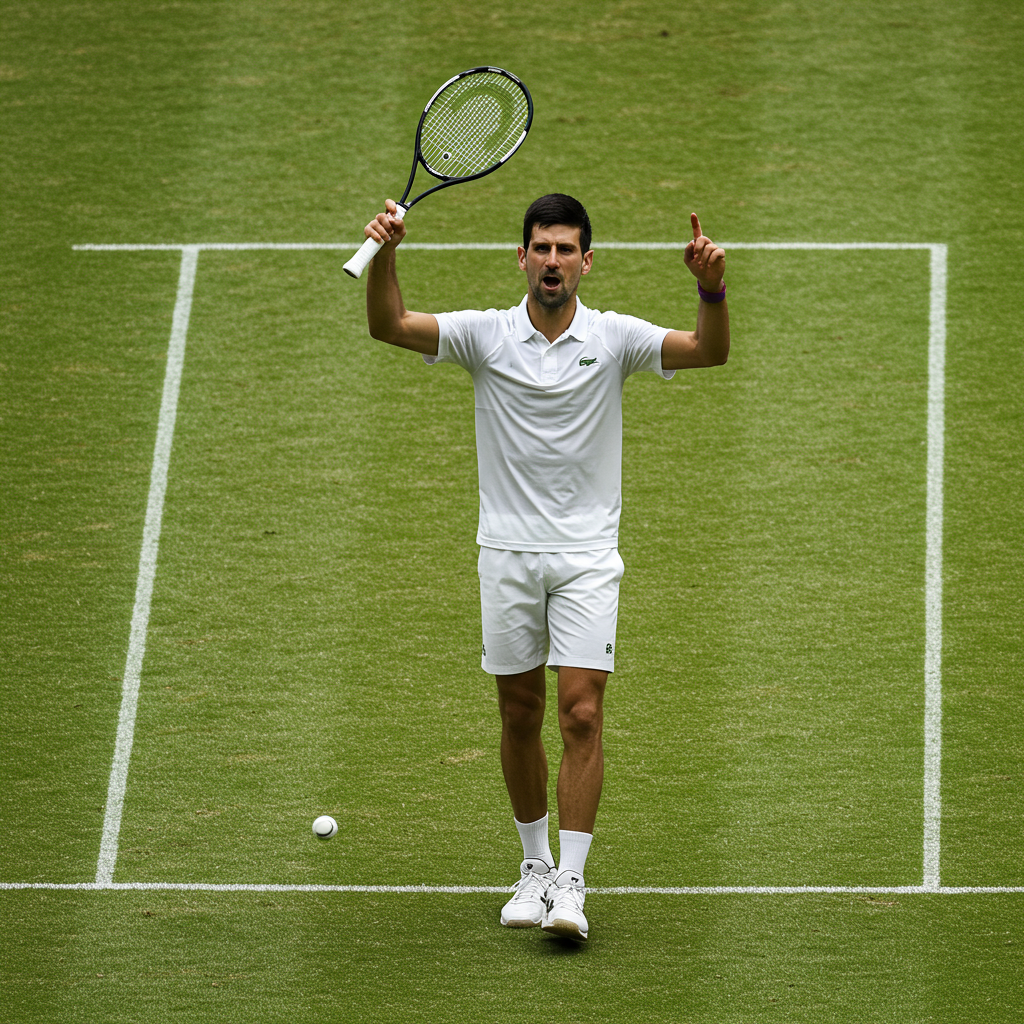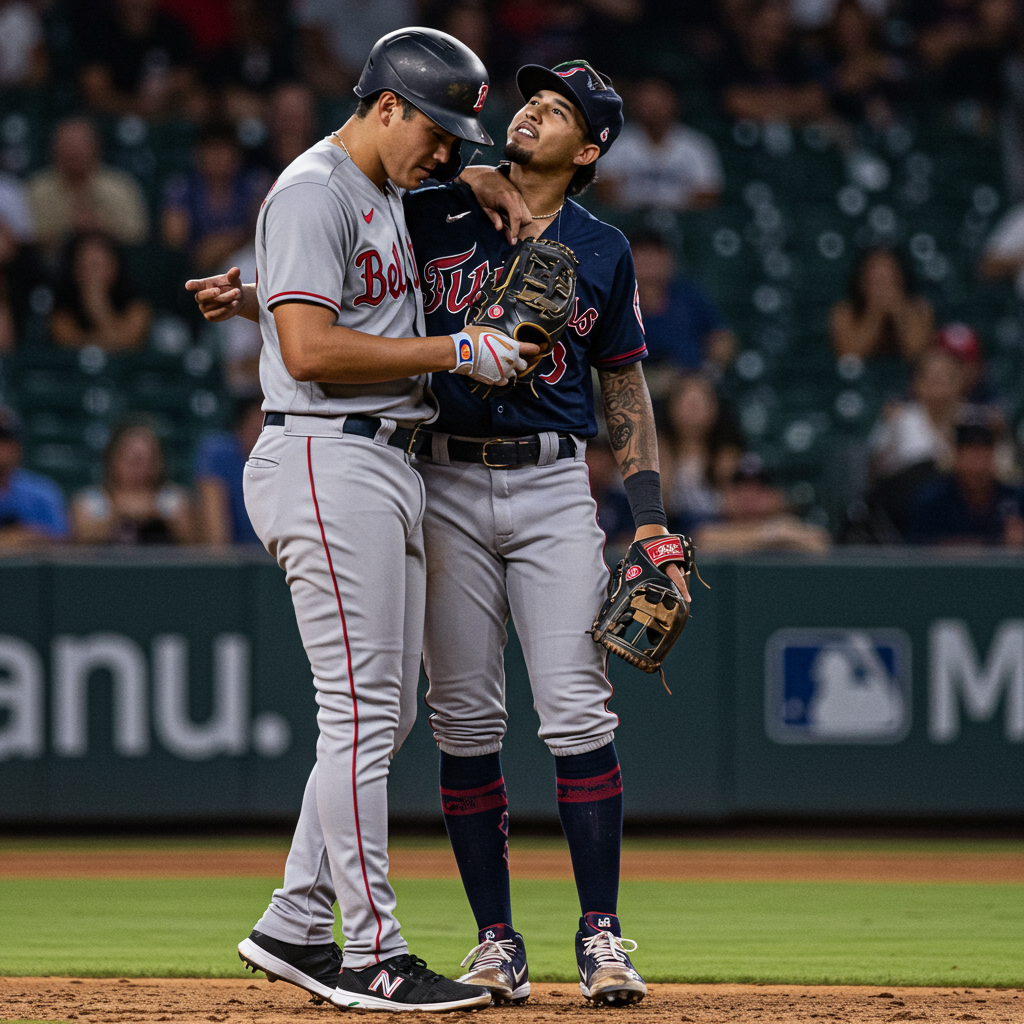A significant shake-up has hit the NBA landscape just days into the free agency period. On Monday, July 7, 2025, a major three-team trade was finalized involving the Los Angeles clippers, Utah Jazz, and Miami Heat. This complex transaction sees key players changing conferences and teams reshaping their rosters with immediate and long-term goals in mind.
The core of the deal, as first reported by Shams Charania, sends impactful guard Norman Powell from the Clippers to the Miami Heat. In return, the Jazz are sending versatile forward John Collins to the Los Angeles Clippers. The Utah Jazz acquire a package including veteran forwards Kevin Love and Kyle Anderson from the Heat, alongside a valuable 2027 second-round draft pick originally held by the Clippers. This strategic exchange signals varying priorities for each organization involved as they navigate the competitive path forward.
Miami Heat Land Offensive Firepower in Norman Powell
For the Miami Heat, acquiring Norman Powell represents a clear move to inject more offensive punch into their lineup. The 32-year-old guard is coming off arguably his most productive season. He averaged a career-high 21.8 points per game. Powell started all 60 games he played for the Clippers. He was widely considered an All-Star candidate for his performance.
Miami is looking to bounce back from a challenging season. Their previous campaign included the trade of star Jimmy Butler to Golden State. It culminated in a disappointing first-round playoff sweep by Cleveland. Powell’s addition provides a proven scorer. He also boasts efficient outside shooting, hitting 42% of his three-pointers last season. His reputation as one of the league’s hardest-working players is expected to align well with Miami’s renowned culture. Powell is set to earn $20.4 million in the upcoming season. This is the final year of his current contract. He is eligible for an extension, a key consideration for the Heat moving forward. Betting markets reflected some skepticism about the trade’s immediate impact on Miami’s ceiling. Despite adding Powell, their odds for the 2026 NBA Finals remained unchanged at +25000. Their Eastern Conference odds were also low at +6500, ranking 10th, indicating oddsmakers view the team’s outlook cautiously following the departure of key players like Butler and, reportedly the same day, Duncan Robinson. Powell is also a playoff-tested veteran, having won a championship with the Raptors in 2019.
Clippers Bring Athleticism and Scoring with John Collins
The Los Angeles Clippers secured a player they have reportedly targeted for years in John Collins. The 27-year-old forward brings the kind of athleticism the Clippers have previously coveted. Last season with the Jazz, Collins appeared in 40 games. He averaged 19 points and 8.2 rebounds. Collins enters the final year of his contract. He is due to earn $26.5 million this coming season. Like Powell, sources indicated Collins was unlikely to sign an extension with his previous team, the Jazz.
Clippers President of Basketball Operations, Lawrence Frank, openly praised Collins. He highlighted the forward’s status as a player in his prime. Frank noted Collins’ ability to play power forward and even small-ball center. His athleticism was a key factor. Frank described him as a three-level scorer. He excels as a runner, roller, and vertical threat. The Clippers believe Collins can form a strong synergy with James Harden. He can potentially unlock new aspects of both their games. Collins also provides valuable floor spacing. He shot 40% from three-point range last season. This will help with rebounding as well.
Clippers’ Strategic Balancing Act
Frank elaborated on the Clippers’ strategic approach. They aim to maintain cap flexibility for the future. This is crucial if a young star potentially becomes available later. At the same time, they want to remain highly competitive now. Frank acknowledged the team’s age. The Clippers are currently one of the two oldest teams in the league. This necessitates an eventual infusion of younger talent. Such talent can be acquired through free agency, the draft, or trades. The team wants to be both opportunistic and disciplined in their moves. This trade aligns with that vision. They acquired Collins while securing future flexibility. Other recent moves like the new partially guaranteed contract for James Harden and signing Brook Lopez with a team option also reflect this focus on future flexibility. Despite these additions, Frank stated the team is “not done”. They still need to add shooting and playmaking, noting the non-tax midlevel exception ($5.3M) is still available. While Norman Powell was a valuable player for the Clippers, particularly excelling as a starter when Kawhi Leonard was injured, the desire for greater financial maneuverability factored significantly into the decision to move him.
Utah Jazz Gain Assets and Flexibility in Restructuring
The Utah Jazz acquired Kevin Love, Kyle Anderson, and the 2027 Clippers second-round pick in the deal. For the Jazz, this trade appears centered on future asset accumulation and financial maneuvering. By trading John Collins, they convert his substantial contract into a valuable 2027 second-round draft pick. Crucially, the trade also generates a significant $26.6 million trade exception. This exception provides Utah with a powerful tool for future transactions.
This move follows other recent offseason activities by the Jazz. They previously traded Collin Sexton and a second-round pick for Jusuf Nurkic. They also completed a contract buyout for guard Jordan Clarkson. These transactions signal a clear focus on restructuring the roster. They are prioritizing future flexibility and draft capital. Kevin Love, 36, is a five-time All-Star but played a reduced role for the Heat last season. He averaged 5.3 points and 4.1 rebounds in 23 games. Love is set to become an unrestricted free agent in 2026. He reportedly expressed interest in remaining with the Heat before the trade. His reaction on social media (“Never thought I’d be a math problem”) reflected his surprise. Kyle Anderson, 31, joins his sixth NBA team. He averaged 6.7 points in 25 games for Miami after being acquired last season in the trade that sent Jimmy Butler to the Warriors. Anderson is under contract for the next two seasons, due $9.2 million and $9.7 million respectively.
Contract Dynamics and Future Planning
The contract situations of the players involved highlight the strategic nature of the deal. Both Powell and Collins are entering the final years of their current contracts. They become unrestricted free agents in the summer of 2026 if not extended. Reports indicated both were unlikely to receive long-term extensions from their previous teams. This likely motivated the Clippers to move Powell for Collins and future flexibility. For the Jazz, getting off Collins’ larger salary in exchange for veterans on shorter deals (Love’s contract ends sooner) and the trade exception provides immediate and future financial flexibility. This flexibility is crucial as the Clippers look ahead, particularly to the summer of 2027 when the contracts of Kawhi Leonard and James Harden are currently set to expire, potentially opening significant cap space. Love’s contract also expires in 2026, while Anderson’s runs for two more seasons.
This three-team NBA trade represents a fascinating interplay of win-now aspirations, long-term financial planning, and asset management across three different franchises. The Heat gain a proven scorer to help fill their offensive void. The Clippers add an athletic, prime-age big man while setting the stage for future cap flexibility. The Jazz acquire valuable assets and financial tools as they continue their roster overhaul. The full impact of this complex deal will unfold in the coming seasons.
Frequently Asked Questions
What specific players and assets were involved in the recent three-team NBA trade?
The trade involved the Miami Heat, Los Angeles Clippers, and Utah Jazz. The Miami Heat acquired guard Norman Powell from the Clippers. The Los Angeles Clippers received forward John Collins from the Jazz. The Utah Jazz acquired forward Kevin Love and forward Kyle Anderson from the Heat, plus a 2027 second-round draft pick from the Clippers.
Which teams acquired which players in this deal and what were their primary motivations?
The Miami Heat acquired Norman Powell primarily to add a proven scorer and shooter to their team, aiming to boost offensive production after a challenging season. The Los Angeles Clippers acquired John Collins for his athleticism and scoring ability at forward, targeting him for his fit while also prioritizing future cap flexibility. The Utah Jazz acquired Kevin Love, Kyle Anderson, and a 2027 second-round pick. Their primary motivation was likely to convert John Collins’ contract into draft capital and create a large trade exception for future roster building flexibility.
Why was cap flexibility a major factor for the Clippers in this trade?
The Clippers are one of the league’s oldest teams and are actively planning for future roster construction. President Lawrence Frank stated the team seeks both competitiveness now and the ability to acquire younger talent later through free agency, the draft, or trades. By moving Norman Powell, who was entering the final year of a significant contract, the Clippers position themselves for greater financial maneuverability down the road, specifically eyeing future cap space potentially aligning with the end of star player contracts in 2027. They want to remain disciplined yet opportunistic in strengthening their roster.
The NBA offseason continues to be dynamic. Teams like the Heat, Clippers, and Jazz are making significant moves to shape their futures. This trade is a major step for all three. It addresses immediate needs while positioning them strategically for what comes next. The added offensive punch for Miami, the athletic frontcourt presence for Los Angeles, and the asset accumulation for Utah will all be closely watched.



